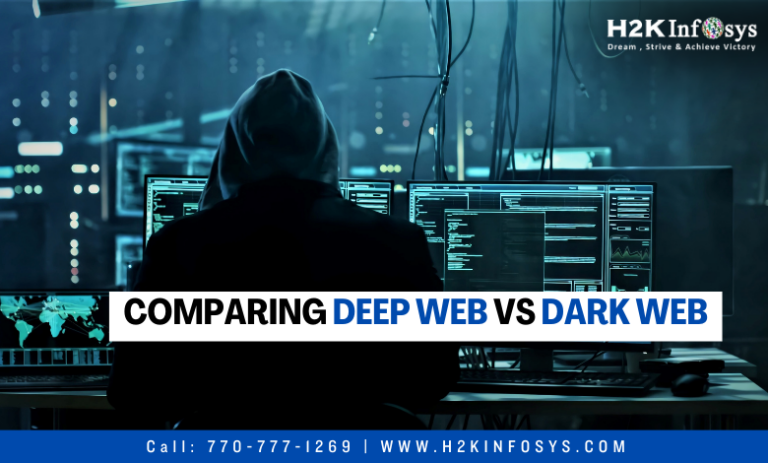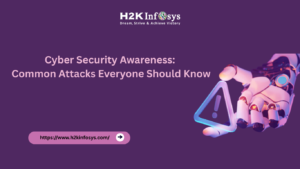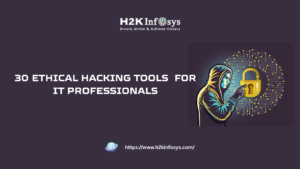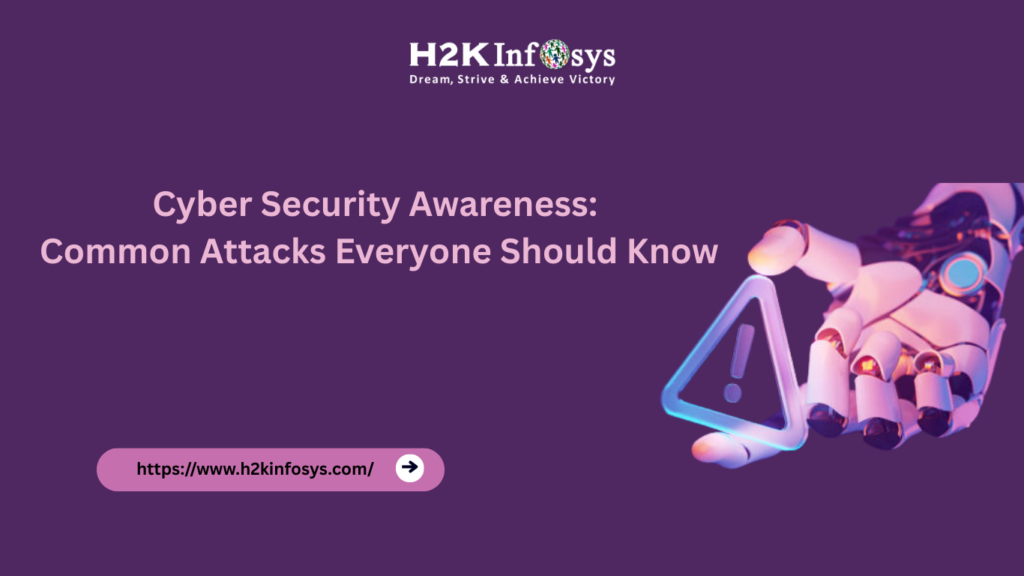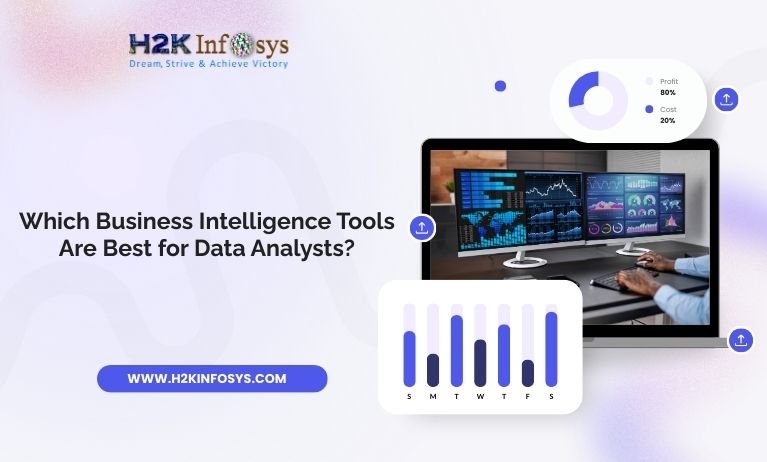Introduction: Revealing the Hidden Layers of the Internet
Most people believe that the internet starts and ends with what they see on Google, Facebook, or YouTube. But in reality, what we access daily makes up just a fraction of the entire internet, known as the surface web. Beneath this digital surface lie two much larger and more mysterious zones: the Deep Web and the Dark Web.
Understanding the Deep Web vs Dark Web is not just a technical curiosity. It is an essential skill for anyone considering a future in cybersecurity. If you’re taking a Cyber security training and placement course, grasping the difference between these two layers is crucial for threat detection, data protection, and ethical hacking.
Let’s unpack what lies beneath and how you can prepare yourself to handle the challenges these hidden areas present.
What Is the Surface Web?
The surface web refers to all the websites and content that can be indexed by traditional search engines like Google, Bing, and Yahoo. This includes:
- Blogs
- Online shopping platforms
- News articles
- Social media profiles
Example in daily use: Searching for “best running shoes” on Google takes you to pages on the surface web. It’s public, easy to access, and doesn’t require special permissions.
However, it accounts for only about 4–6% of the total internet. The rest resides deeper, and this is where the Deep Web vs Dark Web comparison becomes important.
Understanding the Deep Web
The Deep Web comprises parts of the internet that are not indexed by search engines. You can’t “Google” your way into them. Instead, these require passwords, subscriptions, or login credentials. Unlike the dark web, the deep web is not intentionally hidden for secrecy—it is simply protected for privacy and access control.
Real-World Examples of the Deep Web:
- Medical Records: A hospital’s patient database
- Educational Platforms: University course portals
- Corporate Tools: Intranet dashboards used by employees
- Banking Services: Your secure online banking profile
Why Does the Deep Web Matter?
Organizations depend on the Deep Web to conduct secure operations. For instance, a student attending a cyber security training near me class may use a private portal to access study materials—this is part of the Deep Web.
While largely legitimate, improper configurations or outdated encryption methods can make even the Deep Web vulnerable to attacks.
Exploring the Dark Web
Unlike the Deep Web, the Dark Web is a portion of the internet that’s intentionally hidden and only accessible using specialized tools like Tor (The Onion Router) or I2P (Invisible Internet Project). These tools anonymize the user’s identity and location, making their actions untraceable.
What’s on the Dark Web?
- Whistleblower Platforms: Protected communication for journalists
- Black Markets: Trade of illegal goods like narcotics and weapons
- Hacking Forums: Where cybercriminals sell stolen data
- Secure Messaging Channels: For activists under surveillance
Not everything on the dark web is illegal. But when comparing the Deep Web vs Dark Web, the latter carries a much higher potential for risk, especially for cybersecurity teams.

Deep Web vs Dark Web: Key Differences
Understanding the Deep Web vs Dark Web distinction is essential for IT professionals and cybersecurity learners. Here’s how they differ:
| Feature | Deep Web | Dark Web |
| Accessibility | Requires credentials (e.g., logins) | Requires Tor or special tools |
| Indexing | Not indexed but not hidden | Intentionally hidden and encrypted |
| Purpose | Privacy, account security | Anonymity, hidden transactions |
| Legality | Mostly legal | Often associated with illegal activity |
| Examples | Gmail inbox, university portals | Darknet markets, hacker forums |
| Users | Businesses, students, healthcare providers | Journalists, hackers, criminals |
While both are unseen layers of the internet, their intent and risks are dramatically different. The Deep Web vs Dark Web distinction must be understood before developing effective cybersecurity policies.
Common Myths and Misconceptions
Myth 1: The Deep Web Is Dangerous
Not true. The Deep Web supports countless legitimate operations across industries. Your online banking, work dashboard, and even private video streaming accounts are all hosted on the Deep Web. The danger only arises when these systems are left unsecured.
Myth 2: Everything on the Dark Web Is Illegal
This is a partial truth. While the Dark Web does host illegal content, it also provides refuge to whistleblowers, journalists, and activists under threat from authoritarian regimes. The challenge lies in its anonymity, which makes it attractive for bad actors.
Myth 3: Both Are the Same
A clear misconception. The Deep Web vs Dark Web debate reveals fundamental differences in structure, purpose, and user intent. Understanding this helps cybersecurity professionals implement targeted solutions rather than generalized fear-based responses.
Risks and Real-World Threats
The dark side of the Deep Web vs Dark Web conversation involves real-world cybercrime. Threats emerging from these internet layers are increasingly sophisticated and hard to detect.
Common Dark Web Threats:
- Stolen Credentials: Email and banking logins sold on darknet markets
- Ransomware Kits: Ready-made malware packages for sale
- Fake Identity Documents: Passports, licenses, and IDs
- Botnets for Hire: Networks of hacked devices used to attack targets
Deep Web Vulnerabilities:
- Unpatched Systems: Outdated portals can be exploited
- Weak Encryption: Allows traffic to be intercepted
- Misconfigured Access Controls: Lead to unauthorized entry
Cybersecurity teams trained in cyber security training courses learn to scan these networks for early signs of threat and to report compromised data quickly.
Role of Cybersecurity in Deep Web vs Dark Web
Cybersecurity professionals are tasked with protecting sensitive data, preventing breaches, and monitoring criminal activity, much of which can stem from these hidden layers of the internet.
Job Roles Involved:
- Threat Intelligence Analyst: Tracks Dark Web chatter for early alerts
- Security Operations Center (SOC) Analyst: Monitors traffic across all layers
- Penetration Tester: Simulates attacks to find weak spots
- Digital Forensics Investigator: Traces attacks back to their origin
Understanding Deep Web vs Dark Web concepts helps cybersecurity teams decide where to focus resources, which tools to use, and how to protect enterprise data from unseen threats.
How Cybersecurity Training Prepares You
Institutes like H2K Infosys offer cyber security course and job placement programs that teach not only the theoretical aspects of internet layers but also how to detect and secure data from threats hidden within them.
Course Features Include:
- Hands-On Labs: Simulate accessing Deep and Dark Web environments
- Tool Training: Wireshark, Burp Suite, and Threat Intelligence platforms
- Case Studies: Real incidents involving Silk Road, WannaCry, and others
- Job Readiness: Resume building, mock interviews, and placement support
By mastering these modules, learners understand Deep Web vs Dark Web threats and responses, making them more employable in the cybersecurity space.
Real-World Application in Job Settings
In an enterprise cybersecurity role, you may be tasked to:
- Monitor the Dark Web for leaked credentials tied to your organization
- Secure databases operating on the Deep Web from unauthorized access
- Develop a company policy for handling data exposure from underground sites
- Respond to ransomware threats found on underground hacker forums
These are not fictional threats. Companies regularly recruit professionals skilled in Deep Web vs Dark Web monitoring to ensure proactive security strategies.
Conclusion: Why This Knowledge Matters
In today’s evolving threat landscape, understanding the internet goes far beyond what’s visible on the surface. The Deep Web vs Dark Web comparison reveals that most cyber threats stem from areas the average user never sees. For cybersecurity professionals, this knowledge translates into actionable skills.
Whether you’re scanning the Dark Web for data breaches or safeguarding login portals on the Deep Web, your training becomes your first line of defense.
A high-quality Cybersecurity training and placement program can empower you with the tools, techniques, and confidence to thrive in this hidden digital terrain.
Key Takeaways
- The Surface Web is just the beginning of the Internet.
- The Deep Web is where secure digital activities take place, legal and protected.
- The Dark Web is where anonymity thrives, both for good and bad.
- The Deep Web vs Dark Web understanding is vital for cybersecurity learners and professionals.
- Job roles like SOC Analyst and Threat Intelligence Specialist require expertise in monitoring these hidden layers.
- Enrolling in a practical Cyber security course with placement prepares you for real-world cybersecurity careers.
Take your first step into cybersecurity with H2K Infosys. Join our cyber security training and placement program today to master the Deep Web vs Dark Web and become a security professional that organizations rely on.
